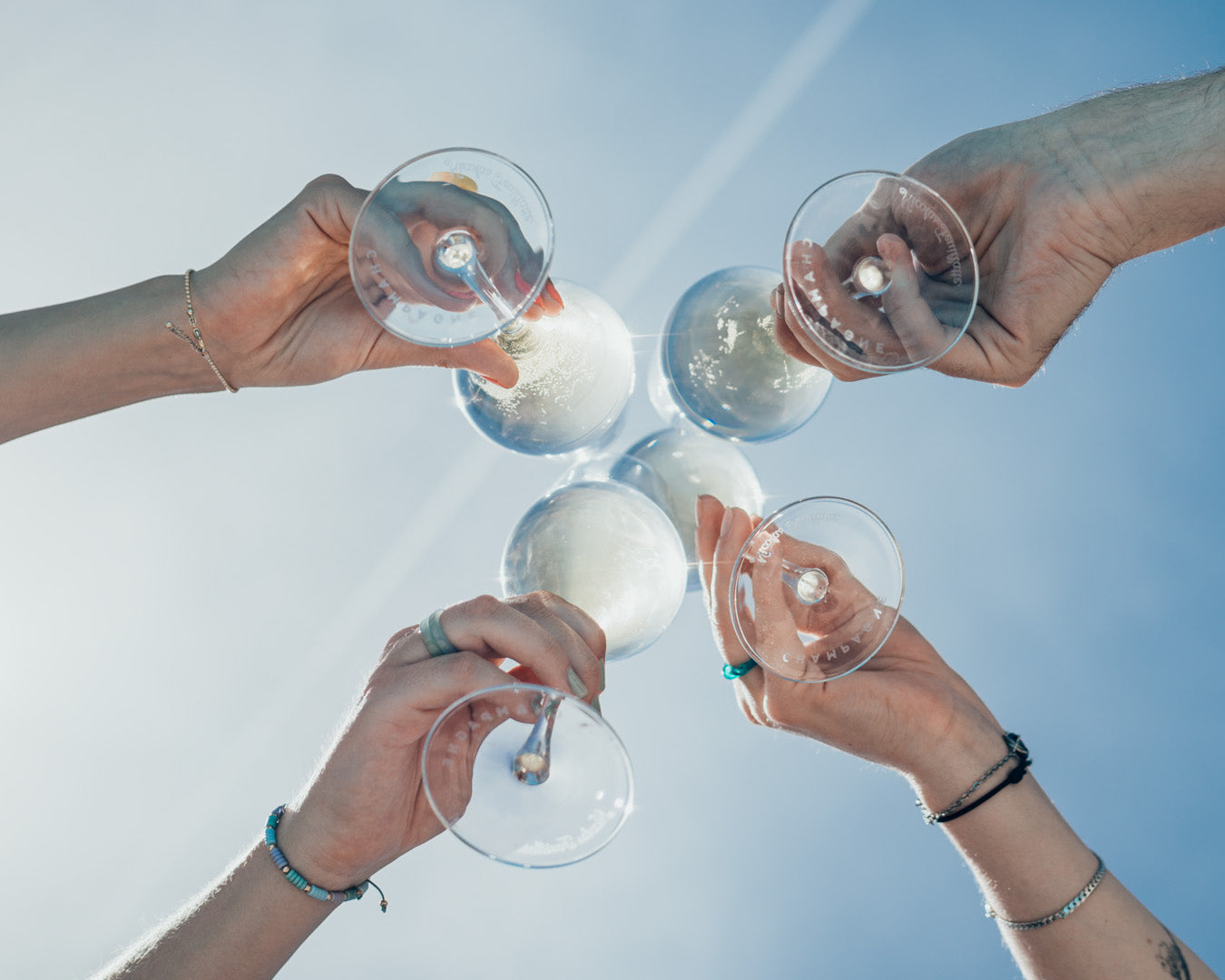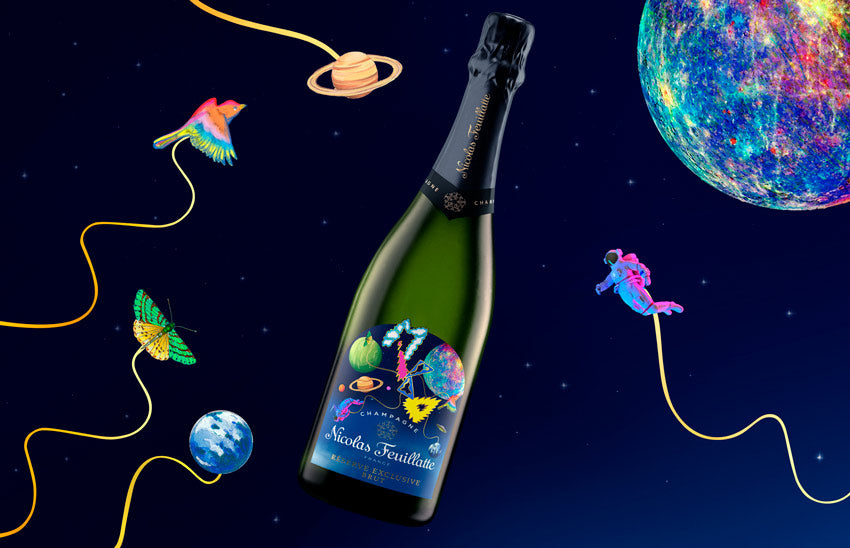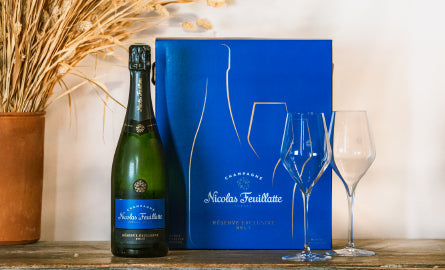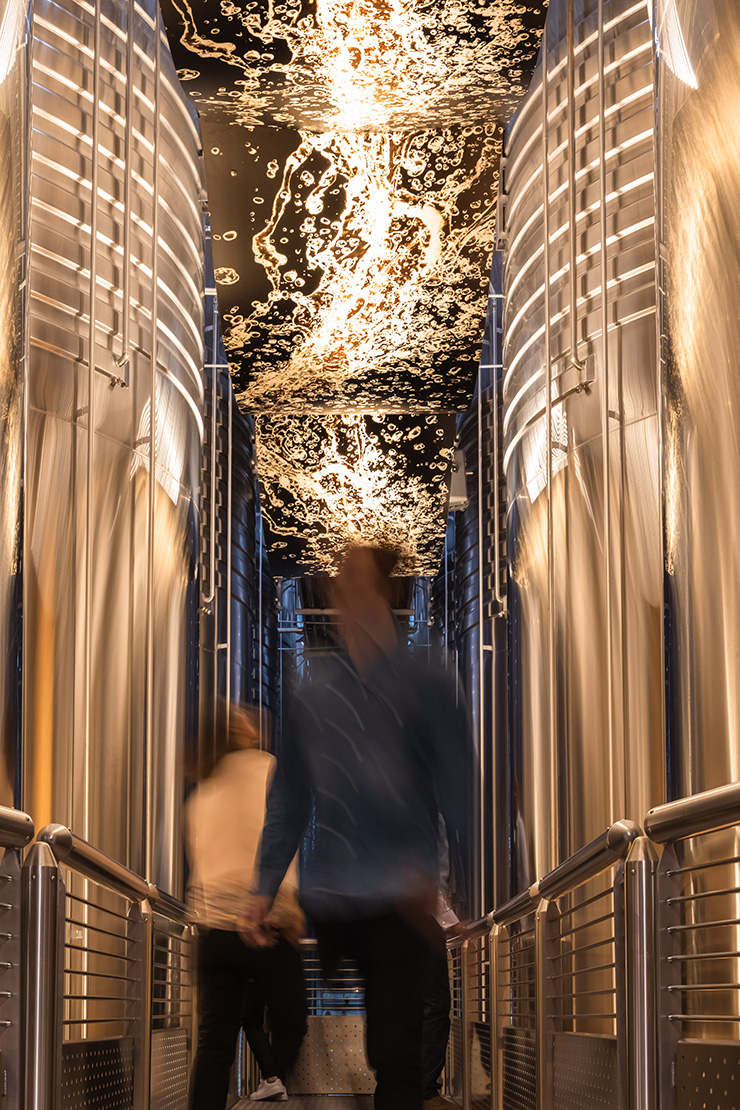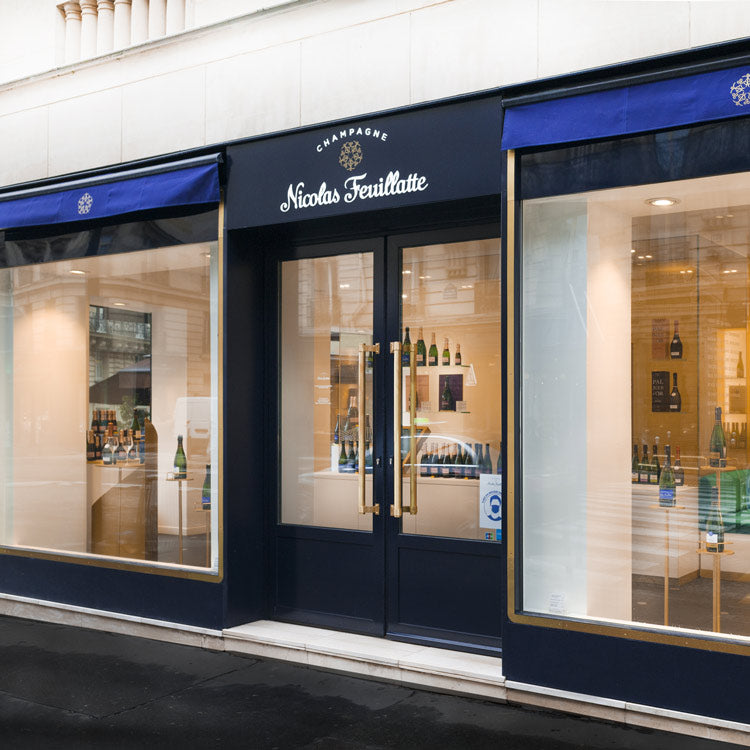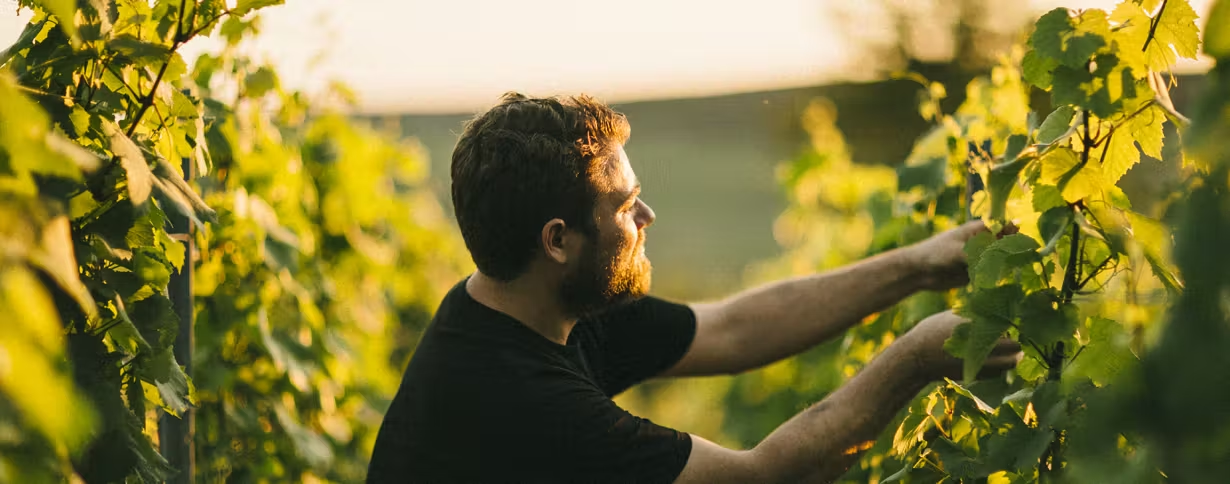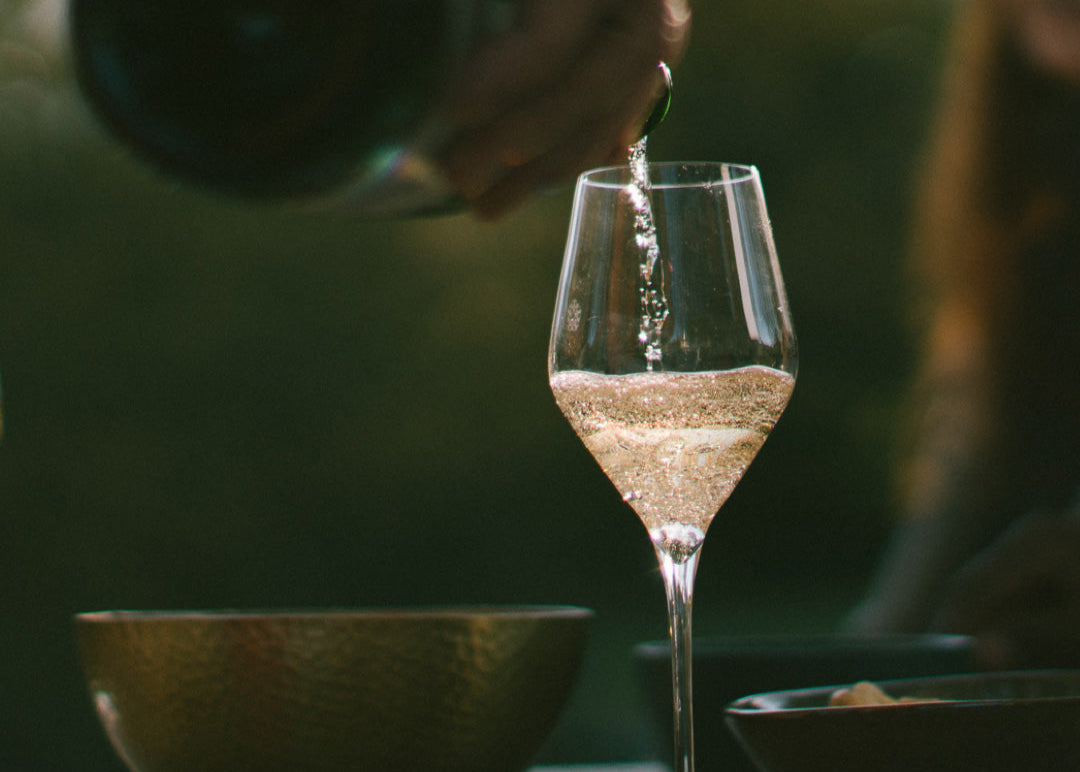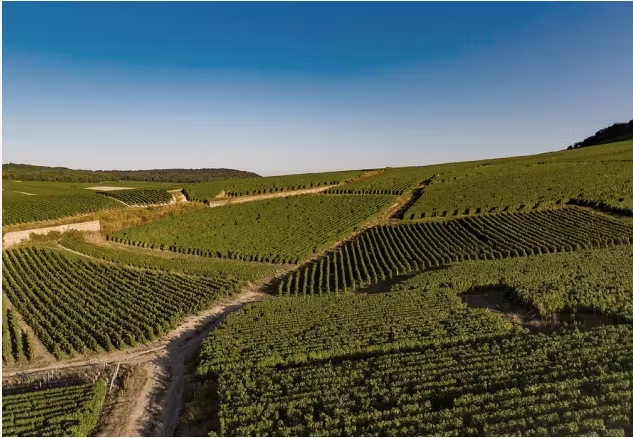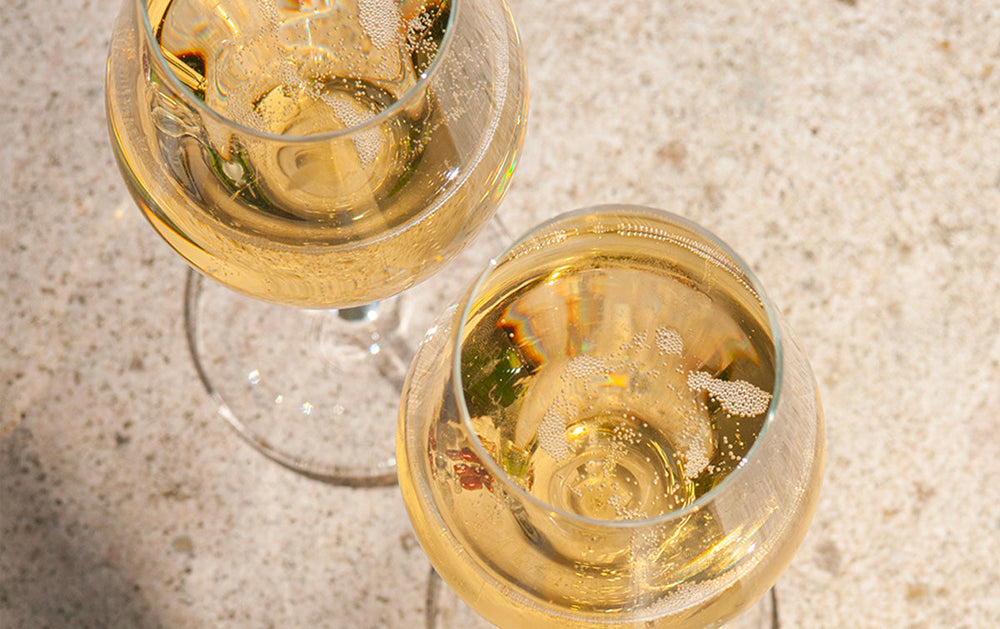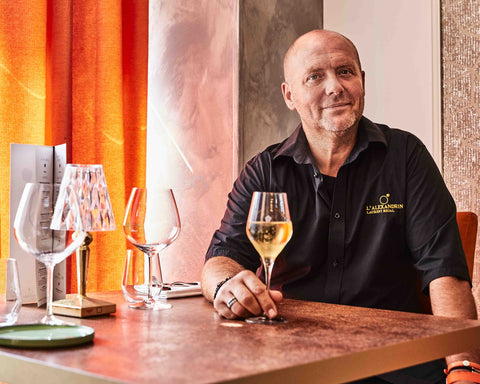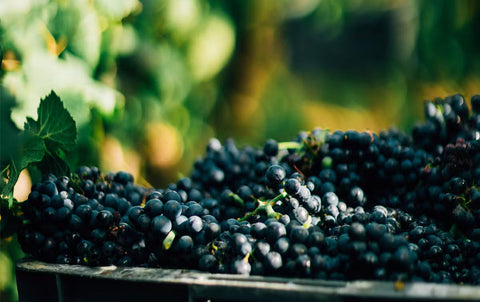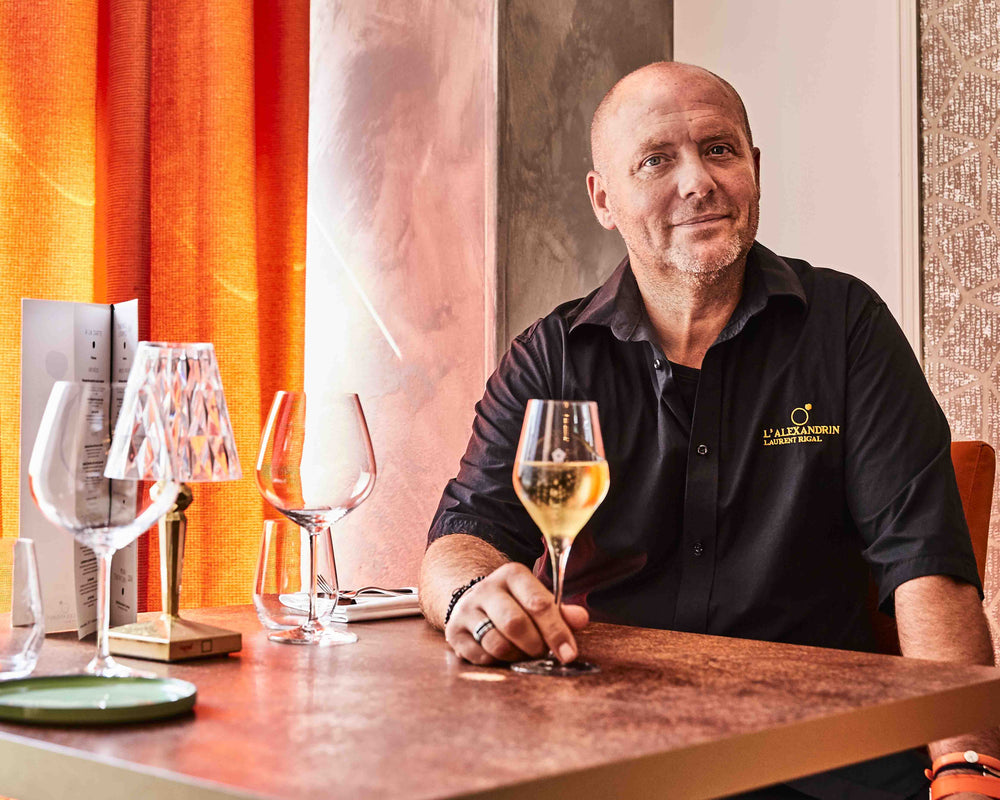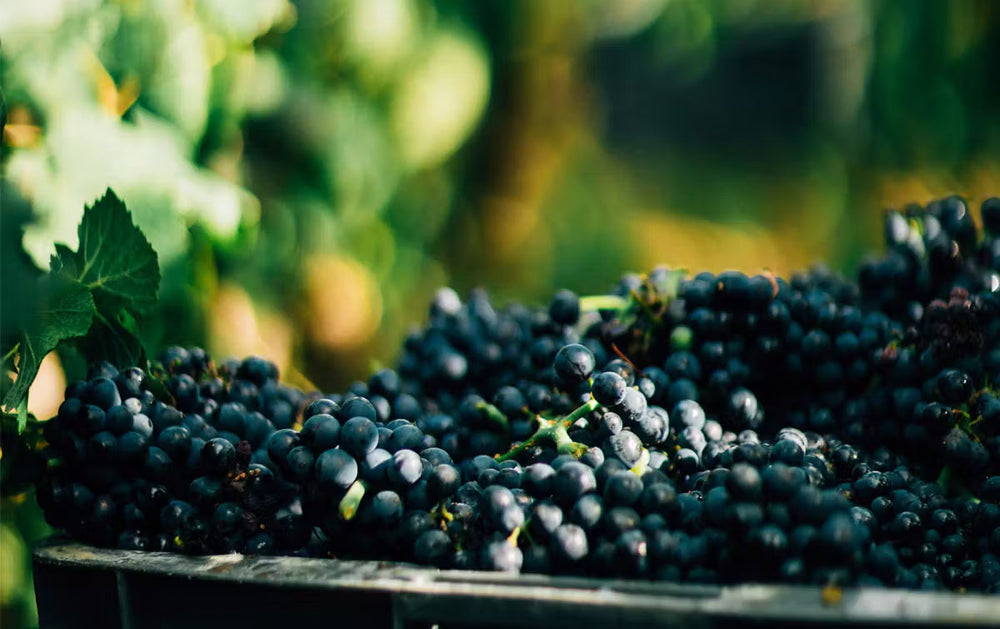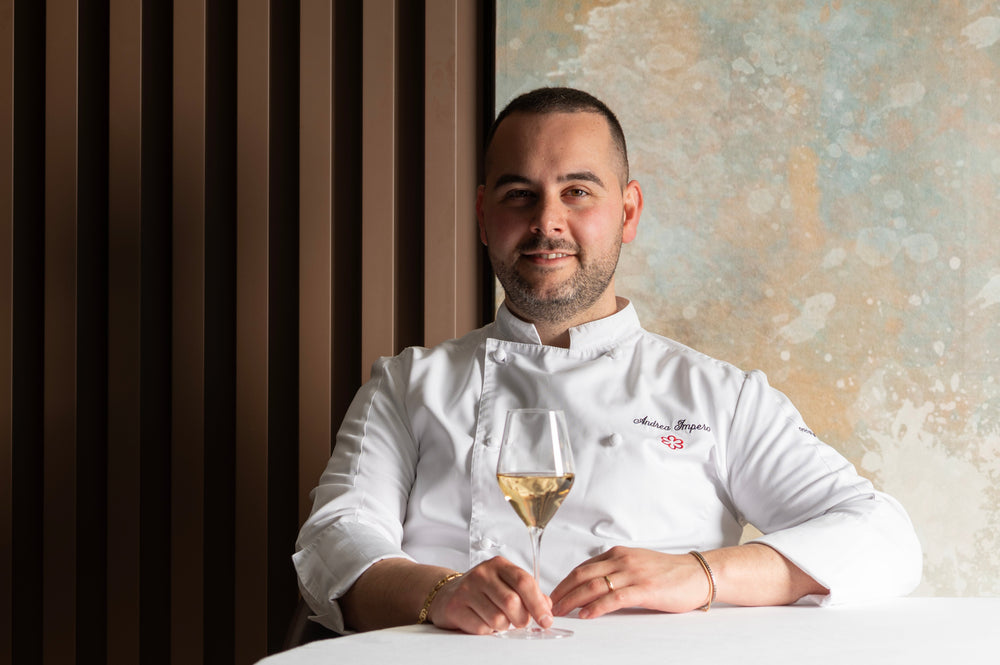The fine bubbles of champagne hold their secrets. How is champagne, a symbol of French pleasure and glamour, made? Let's discover the mysteries of champagne making, this legendary drink shaped by time, which makes life sparkle.
How is champagne made?
There are immutable stages in the production of champagne.
1. Manual harvesting
Champagne means harvesting by hand. Harvests begin between the end of August and the beginning of September, depending on the year, and last approximately three weeks.

2. Pressing
The grapes are sent to the presses to extract the juice. Pinot Noir and Meunier grapes, characteristic of Champagne wines, must be pressed gently to avoid coloring the juice.

3. Alcoholic fermentation
The sugar present in the grapes is transformed into alcohol by the action of yeast in the vats. The resulting liquid is called clear wine in the Champagne region.

4. Assembly
Our Cellar Master Guillaume Roffiaen combines different clear wines to form his own creation, the result of adding different years, grape varieties or plots.

5. Bottling or drawing
The tirage liqueur (wine, sugar, yeast) is added to the blended clear wines. This is when a second fermentation takes place, the visible result of which is this characteristic foam.
6. Riddling and disgorging
It's time to let the future bottles rest. During this stage, the sediment formed during the tapping process is regularly removed by tilting the bottles, necks downward. They are shaken several times to slide the excess into the neck, which is then eliminated through a rather complex freezing process.

7. The dosage
The dosage liqueur (or expedition liqueur), made from wine and sugar, is added. This liqueur is used to adjust the final product's taste and texture: it is therefore what will give the Champagne wine its style and signature.
8. Dressing
The bottle is dressed in the most beautiful way, with this distinctive cork for sparkling wines and a label allowing its production to be recognized among all others.

